The challenge
The market for digital experience monitoring (DEM) software is extremely niche. All of the major players in the industry aim to take as much market share as possible, with the goal of being the leader in the space.
When looking at their existing positioning, Lakeside Software recognized a need to escalate brand awareness across the digital landscape, specifically in search results for key terms.
To stay competitive, they would also need to increase the number of qualified leads coming through organic search. These leads would need to come from their target audience, specifically software buyers in Canada and the United States.
The challenge was clear. In a crowded and niche industry, it can be difficult to drive quality organic traffic. Especially since many of the top industry-related keywords have low search volume.
This was the case for the DEM software space.
Lakeside turned to Directive as the right partner to overcome this obstacle and help its brand become more discoverable against competitors.
The strategy
Although growing organic traffic was top-of-mind, our north star metric for this initiative would ultimately come down to the number of organic leads.
This meant that ranking on the first page of Google was only one part of a much bigger SEO initiative. Driving conversions had to be at the core of our strategy.
As with any partnership, it was critical to align our efforts with the marketing initiatives that Lakeside’s in-house team had already been working on. This collaborative approach allowed us to build out an SEO strategy that targets the buyer throughout every phase of their decision-making process, making it more likely for them to convert.
Intent-driven content creation
We started by building out Lakeside’s blog to establish the brand as a thought leader in the DEM space.
Our content marketing strategy focused on creating thoughtfully-optimized pieces that targeted a variety of relevant industry topics. This would allow us to highlight Lakeside’s industry expertise, while simultaneously picking up organic keywords for these topics.
Two birds, one stone.
During the research phase, we audited search engine results pages (SERPs) across tens of thousands of keywords to identify the top search terms that we should focus our content efforts around.
We pulled terms like “AIops”, “IT operations”, and “application performance monitoring”. It was critical to target less obvious search terms. A prospective customer at the beginning of their buying journey may not directly search for “DEM software” off the bat. Instead, they may be searching for a different, but related, term.
Our content had to capture every potential buyer, no matter what stage of the funnel they’re in.
Providing digital assets with undeniable value
Next, we shifted our focus to conversions.
After speaking with Lakeside’s sales team, they expressed the need for an easier way to communicate return-on-investment (ROI) to their potential customers. As a result, we got the idea to feature an easy-to-use ROI calculator tool on the website.
This was an aligned way to provide value to web visitors, while also generating bottom-of-funnel leads. From ideation to wire framing, the Directive team supported Lakeside every step of the way to get the calculator tool up and running.
Additionally, we decided a sales demo video would be a great supplemental asset to fuel buyer interest at the middle of the funnel.
The goal was to give users a less-committal option to convert, rather than making them request an official demo. This puts the power in the visitors’ hands and gives them what they need, without the inconvenience of having to take another step.
Technical health check-up
Directive discovered that Lakeside’s website was lacking foundational SEO elements and this was causing conversion volume to take a massive hit.
This included a poor internal linking architecture, suboptimal site speed, and a drought of call-to-actions (CTAs) on core pages and blogs.
To begin, we performed a technical audit to determine which pages needed the most work. This allowed us to come up with a site speed action plan and make appropriate recommendations to Lakeside’s internal team to facilitate the necessary changes.
On the conversions side, we optimized all CTAs that were placed on highly-trafficked pages and on the blog. This included strategizing proper placement and making sure the offer was aligned with the user’s placement in the funnel.
We also made sure that all of these high-value pages had no issues from a technical SEO standpoint, such as images being too large to load effectively.
As for internal linking, we aimed to improve user experience and site hierarchy overall. We re-worked all internal links to optimize for an intelligent and audience-focused internal linking structure throughout the site.
The results speak for themselves
Starting from the top, our overarching content and SEO efforts led to a 105% increase in organic new users year-over-year (YoY).
When isolating blog content specifically, we published many pieces which resulted in 229% in organic new users YoY.
Finally, we were able to achieve similarly impressive results on the conversions front. Through a combination of our on-page conversion optimizations, sales demo video, and ROI calculator asset creation, Lakeside saw a 121% increase in organic leads YoY.
Based on these results, it’s clear that Lakeside Software is in a strong position to continue this momentum in the years to come.



